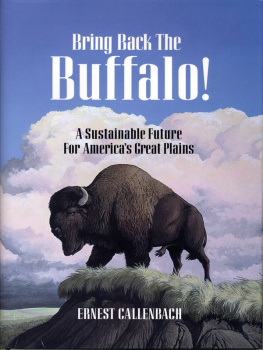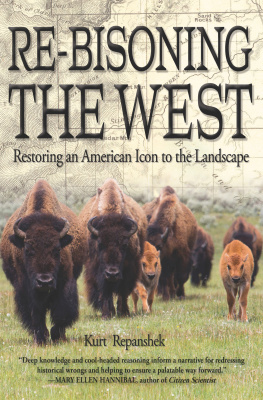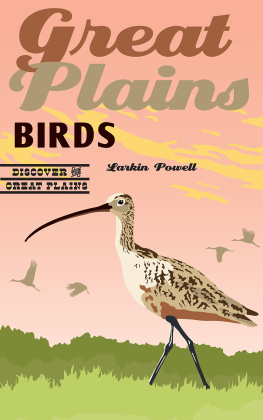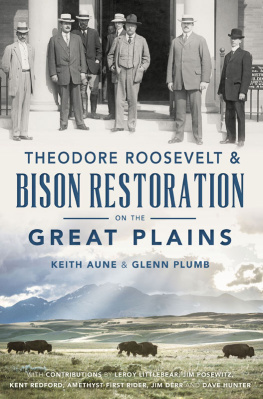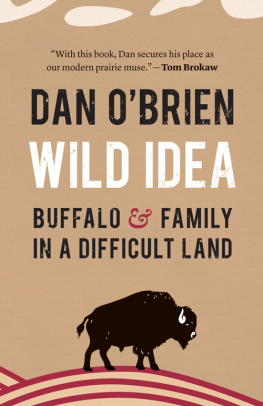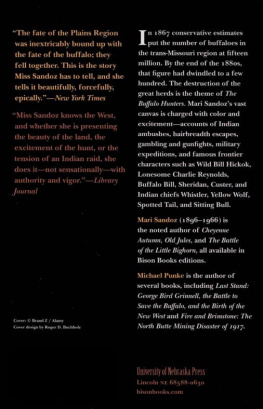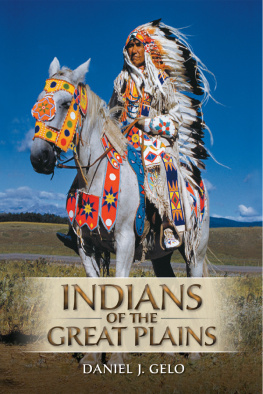Acknowledgments
Christine Leefeldt not only came up with the original idea for the book but also collaborated on many aspects of its preparation, from field research through the manuscripts several rewrites.
I am deeply appreciative of the people named in the text who graciously consented to be interviewed and generously shared their information and thoughts. I am also grateful to the researchers and writers whose work is discussed or quoted in the text, especially Frank and Deborah Popper, who also supplied many productive research leads. The real value of any book comes, implicitly or explicitly, from its being a collaborative conversation among many minds.
I have benefited from the support of numerous talented friends. Malcolm Margolin, incomparable publishing comrade, helped me reorganize the text, generally saved me from myself, and helped shape the books format. Marigay Grana read an early version of the manuscript and provided sound advice. John Berger contributed authoritative guidance for the wind-power chapter. Catherine Moss and Barry Pilger gave informed critical reactions to the manuscript. Richard Kahlenberg and Michael Phillips, longtime fellow conspirators, lent their usual bolstering. William Woodcock, who comes from bison country, gave inspiration and useful research suggestions. Karen Bransons flair for the clear presentation of ideas helped me focus mine. Bob Newhall and Joan Kresich sent me to intriguing historical sources.
The cover painting and the drawings that open each chapter are by Carl Dennis Buell. The drawings of grasses are the work of Bellamy Parks Jansen, and are reproduced by permission from James Stubbendieck, Stephan L. Hatch, and Charles H. Butterfield, North American Range Plants, 4th ed. (Lincoln: University of Nebraska Press, 1992). I am grateful to the skilled and patient photographers whose credits appear in the captions. (I took all uncredited photographs.) The National Geographic Society gave permission to reproduce their carefully researched map of bison ranges and herds.
Hans Callenbach skillfully designed and laid out the book; I am delighted to have been the beneficiary of his talents in this father-son collaboration. Barbara Dean, Barbara Youngblood, Pat Harris, Bill LaDue, and others on the Island Press staff enthusiastically saw the book through to publication.
Librarians at the Berkeley Public Library and the libraries of the University of California, Berkeley, proved unfailingly helpful, as librarians always do. Many museum staff people and many park and government agency employees provided information or aided me in finding it. I also received valuable aid from people not named in the text who provided background, clues, or encouragement; they include J. Baird Callicott, Elio and Diane DePisa, Barry Miller and Janice Moulton, Richard Register, Sonya Richardson, Patricia Ryan, Andy Stahl, David Tilman, Ken Throlson, and Linda Wallace.
Despite the assistance I received from all the people mentioned here, any errors in the book are my sole responsibility.
I would like to add that I am also grateful to the bison themselves. Their tenacity against great odds in the past and their present strength and grace moved me far more than I anticipated when I first began this project.
O give me a home
Where the buffalo roam
Where the deer and the antelope play
Where seldom is heard
A discouraging word
And the skies are not cloudy all day.
TRADITIONAL
Conclusion
They Will Come
Thinking seriously about bison means thinking about our place here on earth as well as the place of bison. If we decide that it is fitting for these noble beasts to share our future, and make room for them on the continent again, we will be a different people. It is worth entertaining the possibility that we will be a more humble, less driven, less exploitative people, with a livelier sense of connection to the wild in ourselves as well as in bison.
Meanwhile, what we need now and what the bison and their companion grazers need is a fundamental reorganization of grazing on the Plains of the kind outlined in this book. Any alteration in land use, especially in the West, can be disturbing. But the only real certainty is that things change, and our ways of occupying the American landscape will inevitably change too. When we visit bison herds, study bison ways, defend bison needs, tell our friends and family about bison, support bison restoration, and even eat bison, we are participating in a great cultural transformation.
As philosophers remind us, ecological principles are ultimately spiritual and cultural. They are axiomatic, just as economic principles are: both rest on unprovable assumptions. In this they are like the fundamental beliefs of all cultures that have risen and fallen before usthey rest on structures of social agreement, and they are subject to revision. There is no way to prove that a healthy and sustainable bioregion is more valuable than a few years of five-cents-a-pound-cheaper hamburger, or vice versa. Only on the basis of what our values really are can we resolve such choices. Like all humans before us, we must decide what is proper, what is rightnot merely what is expedient. Such decisions can be uncomfortable. It would be much easier if we could simply let the economic bottom line be our guide. But mere numbers can never define a satisfactory relationship with the earth or with the universe. To know what we should do about bison, we must consult our hearts.
As I was completing this book, news arrived of a bison blessed event: the birth of a rare white female calf. Two months after Alex White Plume at the Pine Ridge Reservation told me that his tribes elders were expecting the return of a sacred white bison in the near future, it came to passand in his lifetime, as he had hoped. According to some Indians, a white female calf is to be expected only every two thousand years, and her birth heralds the beginning of an epoch of peace and reconciliation among all peoples.
The calf was given the name Miracle, and when word of her arrival got out, thousands of peoplemore whites than Indiansbegan descending on the modest forty-acre ranch in southern Wisconsin where a ranching couple, Dave and Valerie Heider, keep fourteen bison. Newspapers ran stories. On national television, Miracle gamboled around her mother and exchanged grunts, flipped her tail, lay down, stood up, and sprinted daringly across the pasture.
Intense interest in Miracle brought Indians from many tribes to the Heider ranch: Oneida, Cherokee, and other eastern tribes as well as Sioux. A Lakota elder among them named Looks for Buffalo said that he had been having premonitions about the event. It was born to a white family, he commented, as an omen to the white people. They must pay attention to what they are losing. When they want to know something, they ask a machine. They have lost touch with Mother Earth. Indian visitors hung offerings of sage, turquoise, tobacco, and feathers on the fence. They talked about rebirth; they prayed and chanted and drummed. The Heiders originally had some difficulty understanding what all the fuss was about, but they soon began to take the event seriously. With the help of a Chippewa woman from Milwaukee, they established a trust fund for Miracles care.
After some months, Miracle began to turn brownish and it now appears, say the Heiders, that she will mature as a bison of normal coloration. This fact has not, however, diminished her sacred status to Native Americans in the slightest; as they see it, what is crucial is that she was born female and white. (She is not an albino; albinos are fairly common among bison and many other animals.) Some elders even suggest that she may change color againgoing back to white, or to others of the four sacred colors. In any case, eight months after her birth she was in fine health, and had had some 40,000 visitors.

